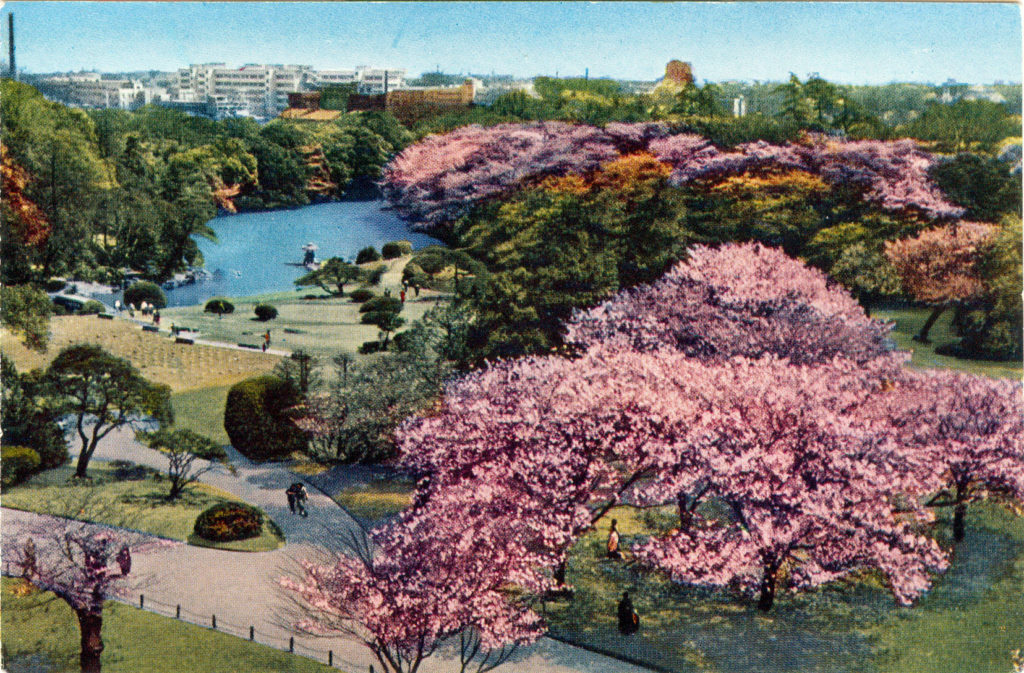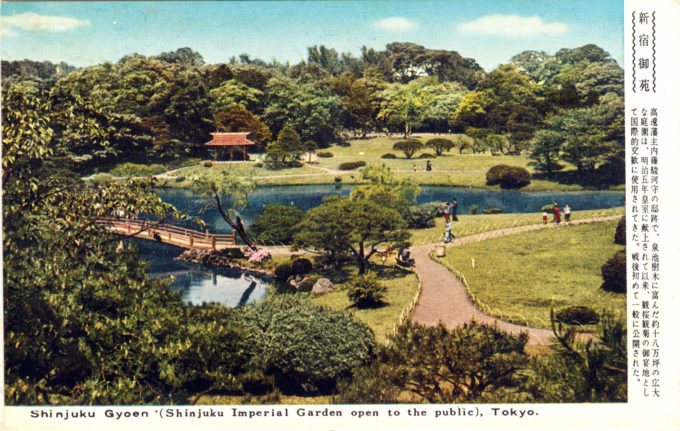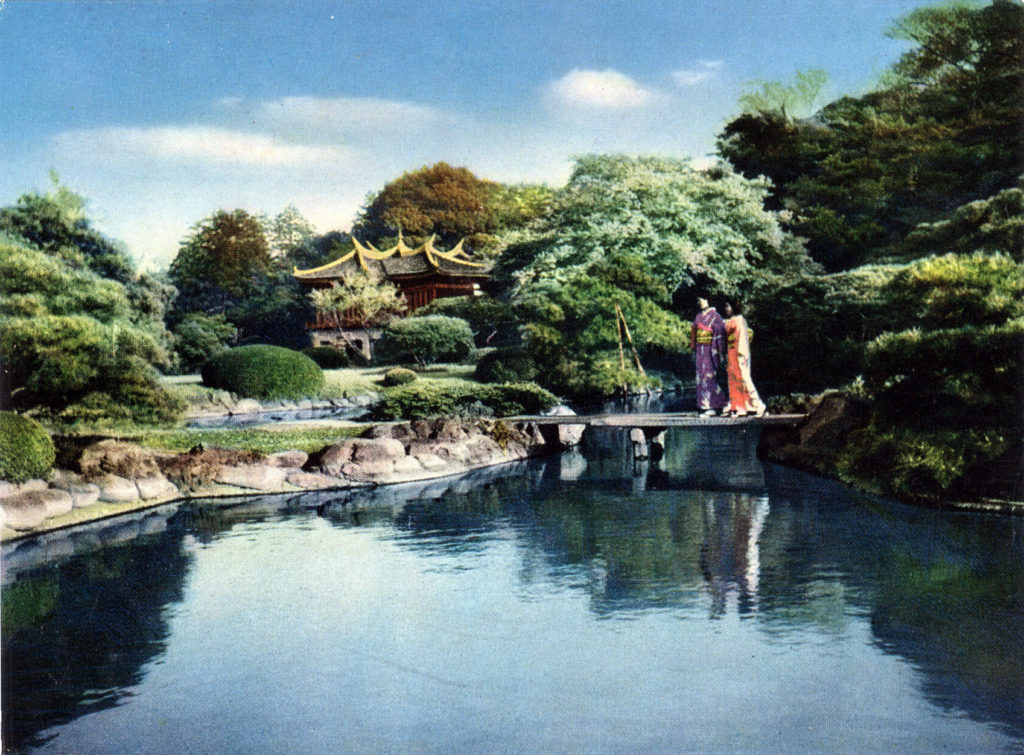
Shinjuku Gyoen (Garden), c. 1960. While the National Garden hosts only half the number of cherry trees which give Ueno Park its spring splendor, Shinjuku Gyoen’s one-thousand cherry trees are still a marvel to view given that the garden rests in the very shadow of the bustling Shinjuku sub-city, mere minutes walking-distance away.
“The site of Shinjuku Gyoen National Garden was once part of the Edo estate of daimyo Kiyonari Naito who, as a vassal, was given the eight states around Kanto region by Hideyoshi Toyotomi in 1590. The grounds once stretched east to Yotsuya, to Yoyogi in the west, to Sendagaya in the south, and north to Okubo, where the strategic points of crossing between the Koshu-kaido, into Edo from the west, and Oume-kaido, from Kamakura to the south. Because of the location’s military importance, Shogun Ieyasu Tokugawa affirmed this area to his most reliable vassal.
“… In 1872 [after the Meiji Restoration], in order to promote modern agriculture in Japan, the government established Naito Shinjuku Experimental Station in the area. In this station, extensive studies were practiced such as the cultivation of various fruits and vegetables, sericulture, stock farming, including Western technique and species. The property was transferred to the Ministry of the Imperial Household in 1879 when it then became the ‘Shinjuku Imperial Botanical Garden’, and managed as an imperial estate and farm belonging to the Imperial Household.
“Hayato Fukuba became the chairman of Shinjuku Imperial Garden in 1898. It was he who invited Henri Martine, a professor at Versailles Horticultural School, France, to begin remodeling Shinjuku Botanical Garden in 1902 from a botanical garden into a landscape garden. The present configuration of the garden was completed in 1906.
“… Shinjuku Gyoen National Garden [continues to play] a role as the garden for the Imperial household, continuing to supply the cuttings and seeds of buttonwoods (sycamores) and tulip trees (liriodendrons). The gardens were also established for the party of watching cherry blossoms since 1917 and for the party of watching chrysanthemums since 1929. Also, during Taisho era [1912-1926], the Western garden was used for a nine-hole golf course.
“The firebombing of Tokyo in May, 1945 almost completely burned out the gardens. Immediately after the war, a municipal agricultural science training school was temporarily established on the grounds. After coming under the jurisdiction of the Ministry of Health and Welfare, as well as the Outer Gardens of the Imperial Palace and Kyoto Imperial Garden, ‘Shinjuku Gyoen National Garden’ was opened to the public on May 21, 1949.”
– Shinjuku Gyoen National Garden, Ministry of the Environment

Shinjuku Gyoen (Garden), Shinjuku, c. 1960. The caption reads “The vast garden, with its fountains, ponds, and trees, was presented to the imperial family in 1872, and has been used for international exchanges as a place to view cherry blossoms and chrysanthemums since then. The garden was opened to the public for the first time after World War II.”


